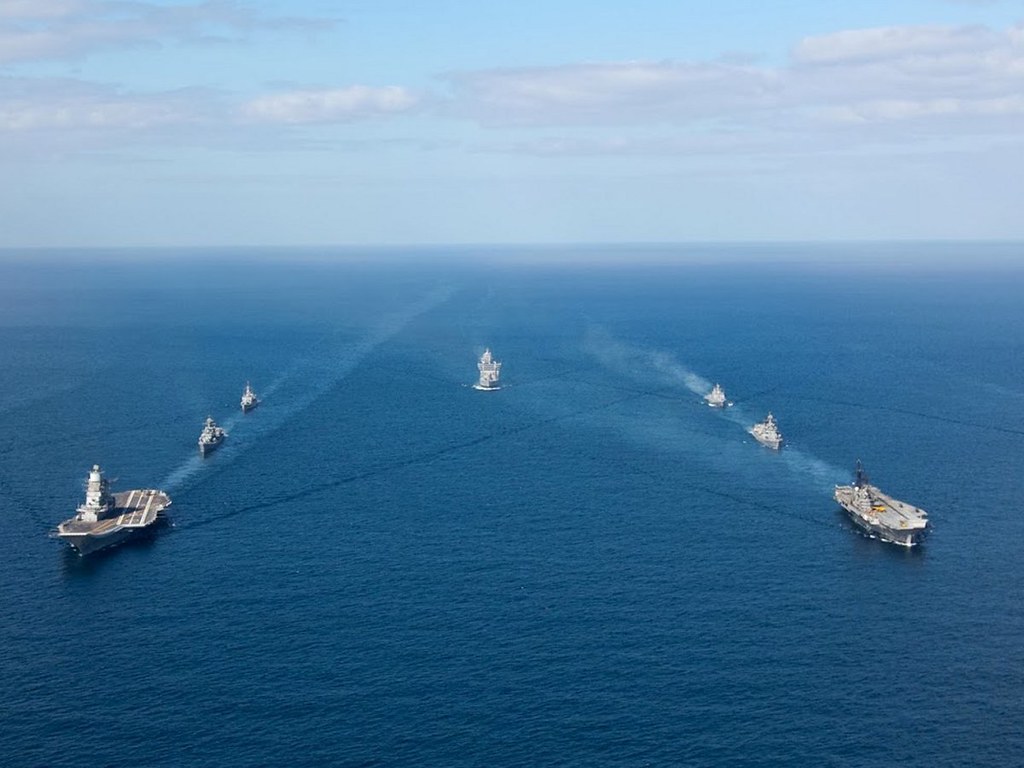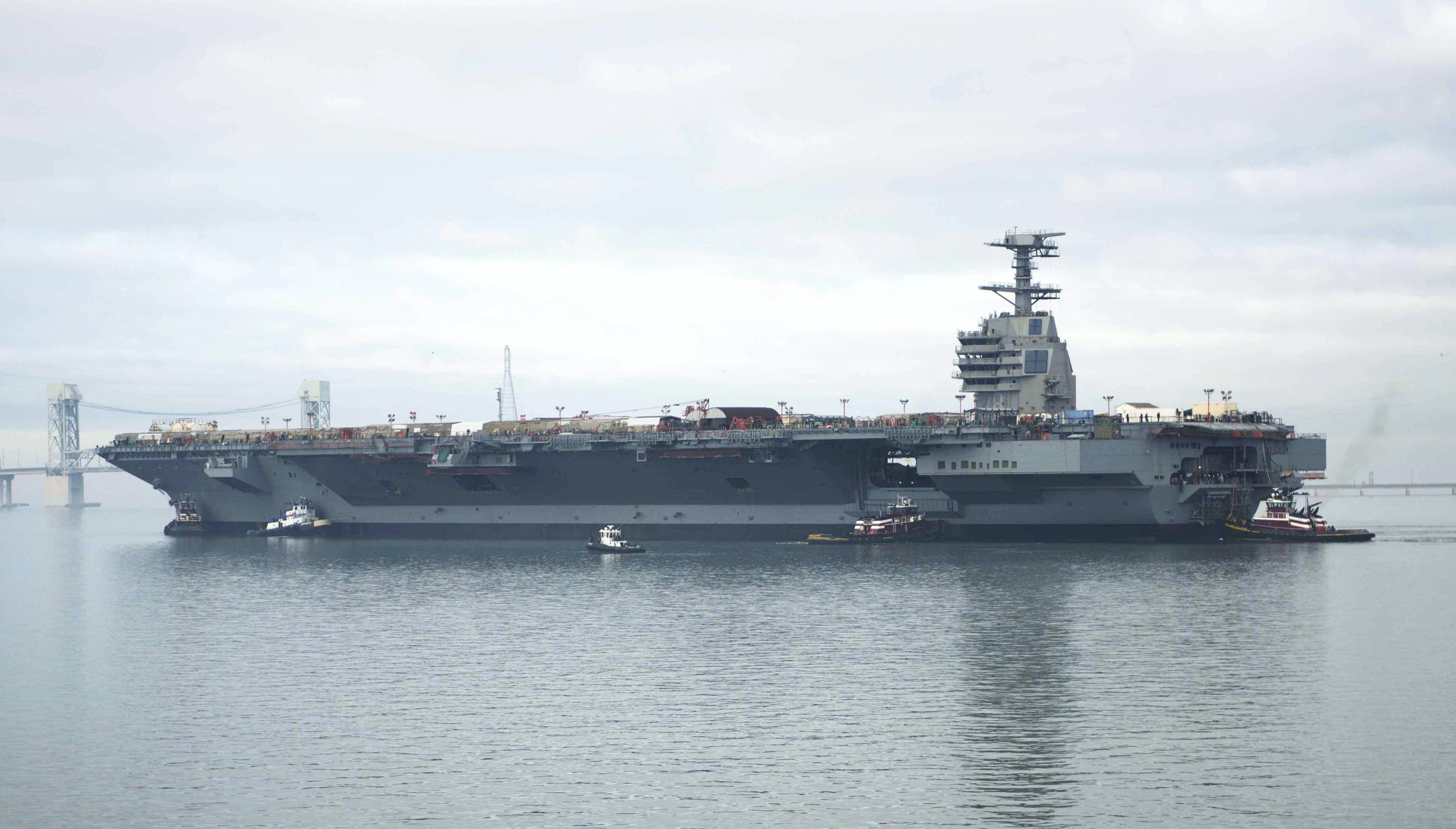Okay, guys...thunderchief in particular.
I PROMISE you, the US Navy catapult designers and engineers know EXACTLY what they are about. They have been doing this stuff...successfully...for a long time.
As I say, they know EXACTLY what they are doing and have left nothing to chance.
These calculations are checked and re-checked many, many times over...and then they go out to land based facilities and test them with dead weights, and then aircraft, starting clean and moving up to every conceivable combination...and they do it hundreds of times.
Finally, they install the same design on the carriers and then proceed to test them equally aggressively.
You are not going to discover some error or something they "forgot," or did not take into account while talking here on an internet forum. It's just not going to happen. NOr could it. You simply do not know enough about the process and technology to do so.
Particularly since I am certain that no one here has actually sat at the design and engineering table for these specific designs...EVER...and tried to either recreate or check exactly what they are doing.
There is nothing wrong with questions. There is nothing wrong with trying to imagine what it must be like. There is nothing wrong with trying to figure out what calculations are involved.
But please do not imply that they are "wrong," or that somehow they are not taking everything into consideration.
Believe me, unless you have been a part of one these teams for a major military program in a design or engineering role...you are not even beginning to scratch the surface of all that is involved or the resources available to such a program.
I have been in that role, albeit not on catapults.
Trust me when I say, they know exactly what they are doing, they leave nothing to chance, they are checked and rechecked and then checked again scores and scores of times...and then they go out and test the apparatus hundreds of times on land before even considering taking it to sea for the first time....and then that too is to test a lot more, and test again and again before it ever even approaches operations.
Can something still fail? Of course. The material is not perfect, no matter how much you put into it. This is very high performance stuff meant to operate in harsh conditions.
But it will not be because the absolute best minds were not on it, and not because they took something to chance or forgot something.
Almost invariably if something like this fails, it will because someone operating it makes a mistake...or takes a chance (and in serious combat situations, they may determine that they have to take such a chance)...or because some piece of it failed due to imperfections within it.
As a result of all of this...I tell you now that the F-35C is going to operate very well off of EMALS, and in all conditions with all sorts of stores...up to and including being completely loaded out. And it will end up doing so tens and ultimately, hundreds of thousands of times.
Carry on.
I PROMISE you, the US Navy catapult designers and engineers know EXACTLY what they are about. They have been doing this stuff...successfully...for a long time.
As I say, they know EXACTLY what they are doing and have left nothing to chance.
These calculations are checked and re-checked many, many times over...and then they go out to land based facilities and test them with dead weights, and then aircraft, starting clean and moving up to every conceivable combination...and they do it hundreds of times.
Finally, they install the same design on the carriers and then proceed to test them equally aggressively.
You are not going to discover some error or something they "forgot," or did not take into account while talking here on an internet forum. It's just not going to happen. NOr could it. You simply do not know enough about the process and technology to do so.
Particularly since I am certain that no one here has actually sat at the design and engineering table for these specific designs...EVER...and tried to either recreate or check exactly what they are doing.
There is nothing wrong with questions. There is nothing wrong with trying to imagine what it must be like. There is nothing wrong with trying to figure out what calculations are involved.
But please do not imply that they are "wrong," or that somehow they are not taking everything into consideration.
Believe me, unless you have been a part of one these teams for a major military program in a design or engineering role...you are not even beginning to scratch the surface of all that is involved or the resources available to such a program.
I have been in that role, albeit not on catapults.
Trust me when I say, they know exactly what they are doing, they leave nothing to chance, they are checked and rechecked and then checked again scores and scores of times...and then they go out and test the apparatus hundreds of times on land before even considering taking it to sea for the first time....and then that too is to test a lot more, and test again and again before it ever even approaches operations.
Can something still fail? Of course. The material is not perfect, no matter how much you put into it. This is very high performance stuff meant to operate in harsh conditions.
But it will not be because the absolute best minds were not on it, and not because they took something to chance or forgot something.
Almost invariably if something like this fails, it will because someone operating it makes a mistake...or takes a chance (and in serious combat situations, they may determine that they have to take such a chance)...or because some piece of it failed due to imperfections within it.
As a result of all of this...I tell you now that the F-35C is going to operate very well off of EMALS, and in all conditions with all sorts of stores...up to and including being completely loaded out. And it will end up doing so tens and ultimately, hundreds of thousands of times.
Carry on.





